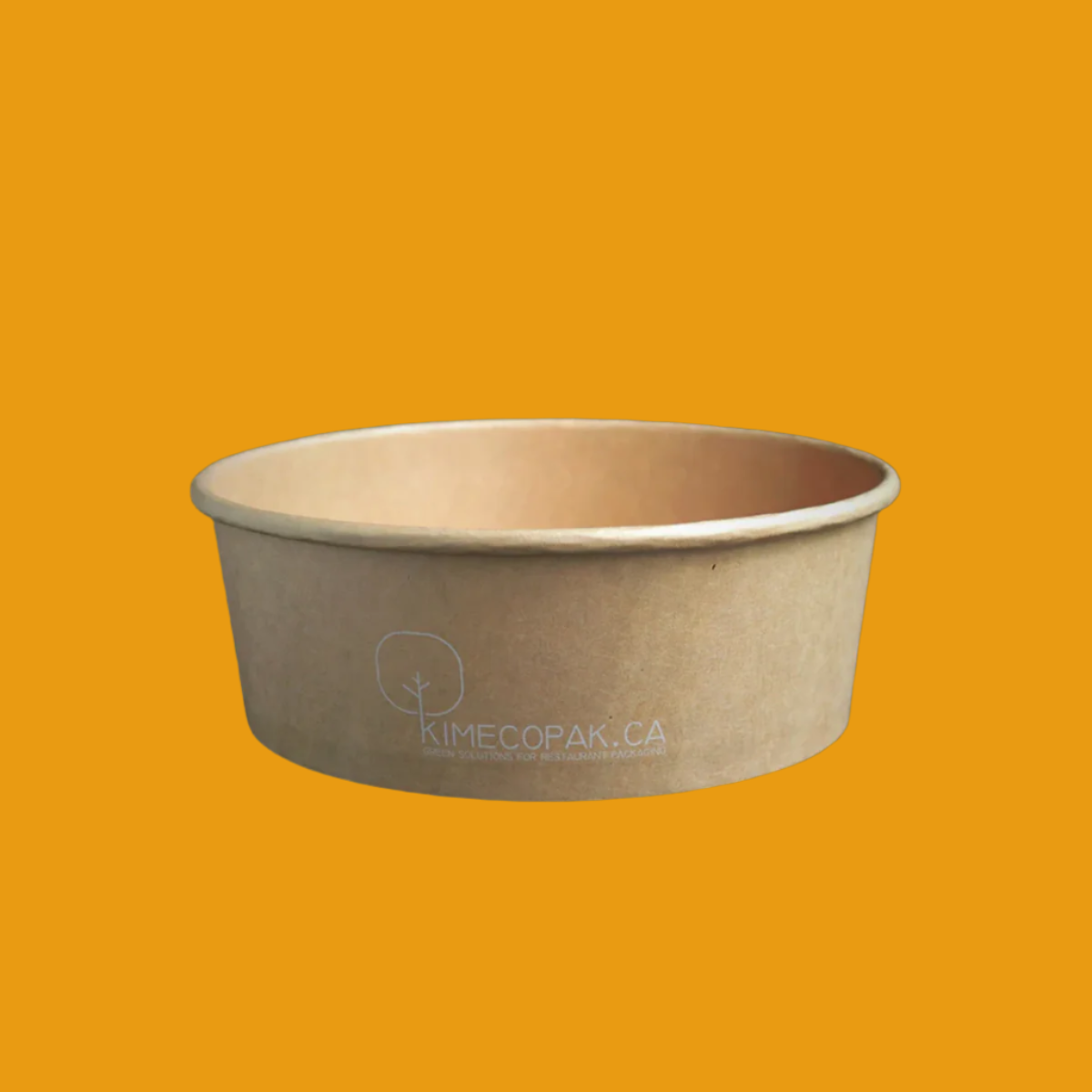In today's fast-paced world, the demand for convenient and nutritious meal options is rapidly increasing, making the meal prep service industry more popular than ever. Offering pre-portioned, ready-to-cook or ready-to-eat meals, meal prep services cater to busy professionals, health-conscious individuals, and families seeking convenience without sacrificing quality.
In Canada, the meal kit delivery market is projected to reach USD 3.26 billion by 2030, reflecting the growing demand for such services. To succeed in this thriving market, however, it's crucial to understand the necessary steps, from conducting market research to building a business plan and ensuring legal compliance. This guide will take you through the essential stages of launching a successful meal prep service.
-
What is prep-meal business & How to start prep meal business 2025?
-
Steps to Start Your Successful Subscription-based Meal Business
Understanding the Meal Prep Service Landscape

Definition
Meal prep services are designed to meet the needs of individuals seeking convenience and health-conscious eating habits. These services offer pre-portioned ingredients that may be ready to cook or ready to eat, delivered directly to customers’ doors. The main appeal lies in saving time, simplifying meal planning, and promoting healthier eating choices.
Market Growth
The meal kit delivery services market in Canada has shown significant potential for growth. According to projections, it is expected to reach USD 3.26 billion by 2030, growing at a compound annual growth rate (CAGR) of 16.5% from 2024 to 2030. This rapid increase highlights a shifting consumer preference towards more convenient and health-focused meal options.
Key Steps to Launch Your Meal Prep Business

Conduct Market Research
Identify Target Audience
To create a successful meal prep service, it's crucial to identify your target audience. The primary groups include:
- Busy Professionals: Individuals looking for quick yet nutritious meal options to fit their hectic schedules.
- Health Enthusiasts: Consumers focused on maintaining a healthy lifestyle, often seeking balanced meals tailored to specific dietary needs.
- Families: Households looking for convenient meal solutions that save time and minimize the hassle of grocery shopping and meal planning.
Analyze Competitors
Examining existing meal prep services can offer valuable insights. By identifying what competitors do well and where they fall short, you can find market gaps and opportunities. For instance, while some services may focus on specific dietary restrictions, others may excel in diverse cuisines. This understanding allows you to differentiate your offerings and create a unique value proposition.
Develop a Business Plan
Outline Services
Your business plan should clearly outline the services you will provide. Consider:
- Meal Types: Will you offer vegetarian, vegan, gluten-free, or family-style options?
- Subscription Models: Analyze the feasibility of weekly, bi-weekly, or monthly plans.
- Delivery Areas: Determine the geographic areas you can service efficiently.
Financial Planning
Proper financial planning is essential for success. Estimate your startup costs, which may include kitchen rental, ingredient sourcing, marketing, and operational expenses. Additionally, develop pricing strategies that reflect the quality of your meals while remaining competitive. Make projected revenue calculations to gauge the potential profitability of your business.
Legal and Regulatory Compliance
Business Registration
Before launching your meal prep service, ensure you register your business and acquire all necessary licenses. Compliance with local regulations is vital to operate legally.
Food Safety
Adhering to food safety standards is crucial when handling and preparing food. Familiarize yourself with Canadian food safety regulations, including the Hazard Analysis Critical Control Point (HACCP) principles. Implementing stringent food safety practices helps build trust with your customers and protects your brand.
Secure a Commercial Kitchen
Facility Requirements
Finding a suitable commercial kitchen that meets health and safety standards is a critical step. Look for facilities that are certified and equipped for food production. A well-equipped kitchen can enhance efficiency and help ensure food quality.
Equipment Needs
Investing in the necessary cooking and packaging equipment is essential. Depending on your menu, this may include ovens, cooking utensils, packaging machines, and storage solutions. Quality equipment not only streamlines production but also contributes to the final product's appeal.
Crafting Your Meal Prep Menu

Menu Development
Creating a diverse meal prep menu is essential for appealing to a wide range of dietary preferences. This not only satisfies customer needs but also encourages repeat business. Here are some popular dietary options to consider:
- Vegan: Plant-based meals rich in nutrients using ingredients like chickpeas, lentils, and quinoa.
- Keto: Low-carb meals featuring healthy fats, such as avocados, nuts, and fatty fish.
- Gluten-free: Meals that avoid gluten and incorporate nutritious alternatives like rice, potatoes, and gluten-free grains.
By including a variety of meals, you can cater to different tastes and dietary restrictions, making your service more attractive to a broader audience.
Sourcing Ingredients
The quality of your meals largely depends on the ingredients. Partnering with reliable suppliers ensures you have access to fresh, high-quality products. Engage with local farmers and markets for seasonal produce, and seek out suppliers that prioritize sustainable practices. This not only enhances the quality of your meals but also supports the community and minimizes your carbon footprint.
Packaging Solutions
Consumers today are increasingly conscious of the environmental impact of their choices. Using sustainable, compostable packaging can make your meal prep service stand out. Consider packaging that is biodegradable, recyclable, or made from renewable materials. This approach not only appeals to eco-conscious consumers but also aligns your brand with modern sustainability trends.
Marketing and Growing Your Customer Base

Digital Presence
In today’s digital world, having a user-friendly website is crucial. Your website should showcase your menu, pricing, and ordering process clearly. Additionally, maintaining active social media profiles can help you engage with your audience, share customer testimonials, and showcase new menu items. Effective social media strategies often lead to increased visibility and customer loyalty.
Promotions
Offering promotions is a great way to attract new customers and encourage them to try your service. Consider implementing:
- Introductory discounts for first-time customers.
- Referral programs where customers can earn rewards for referring new subscribers.
- Loyalty rewards that incentivize repeat business through discounts or exclusive offers.
These strategies not only help in acquiring new customers but also retain existing ones.
Partnerships
Collaborating with gyms, health clubs, and local businesses can significantly expand your reach. These partnerships can provide mutual benefits: your meal prep service can be recommended to fitness enthusiasts, while the partner business can offer your meals as part of a wellness program. Joint promotions or events can also attract new customers from both parties' clientele.
Operational Efficiency and Scaling
Order Management
Implementing software solutions for tracking orders and managing inventory can greatly enhance your operational efficiency. Look for platforms that integrate order management, inventory tracking, and customer relationship management. These tools help streamline operations, ensuring you never run out of popular items and can track customer preferences.
Delivery Logistics
Optimizing delivery routes and schedules is critical for ensuring timely service. Utilize route optimization software to reduce delivery times and costs. Consider offering different delivery options, such as same-day delivery or delivery windows, which can cater to your customer's preferences and enhance their overall experience.
Customer Feedback
Regularly collecting and analyzing customer feedback can provide valuable insights for improvement. Encourage customers to share their thoughts on meals, delivery service, and overall satisfaction. By acting on this feedback, you can continuously refine your offerings, which is crucial for long-term success.
Financial Considerations

Startup Costs
Starting a meal prep service requires a significant investment. Initial costs can range from $20,000 to $50,000, encompassing:
- Ingredients for meal preparation
- Staffing costs, including chefs and delivery personnel
- Packaging materials
- Marketing expenses to promote your service
- Kitchen rental fees
Having a clear budget plan is essential to understand your financial landscape.
Revenue Streams
Diversifying your revenue streams can contribute to the sustainability of your meal prep business. Consider implementing:
- Subscription models for recurring revenue, which can provide a stable income stream.
- À la carte options that allow customers to purchase meals individually.
- Corporate partnerships that provide catered meals for offices or events, creating a consistent client base.
Profit Margins
Aim for sustainable profit margins by carefully balancing quality with cost-efficiency. Assess which ingredients add the most value to your meals and strategize ways to manage costs without sacrificing quality. Stay informed about market trends to optimize pricing effectively.
Staying Ahead: Trends in Meal Prep Services
Personalization
Offering customizable meal plans is becoming increasingly popular. Allow customers to choose specific ingredients, portion sizes, or dietary restrictions. This flexibility not only helps cater to individual preferences but also enhances customer satisfaction, leading to increased loyalty.
Technology Integration
Utilizing apps and online platforms for seamless ordering and customer engagement can elevate your customer experience. Look into developing a mobile app or optimizing your website for mobile use. Providing easy access for your customers to place orders and manage their subscriptions can set you apart from competitors.
Health and Wellness Focus
With a growing emphasis on health and wellness, it's essential to highlight the nutritional benefits of your meals. Educate customers about portion sizes, ingredients, and nutritional values directly on your platform. This transparency can resonate with health-conscious consumers looking for convenient meal solutions that align with their wellness goals.
Conclusion
Starting a meal prep service is a promising venture with immense potential, but it requires a clear strategy and careful planning. From developing a diverse menu and sourcing quality ingredients to creating a strong online presence and optimizing operations, every step is key to building a sustainable business.
By focusing on customer satisfaction, maintaining high standards, and continuously adapting to industry trends, you can grow your meal prep service into a thriving business. Now is the perfect time to tap into this growing market and establish your brand in the expanding meal prep industry.









